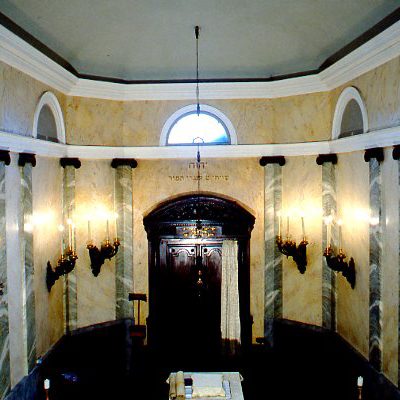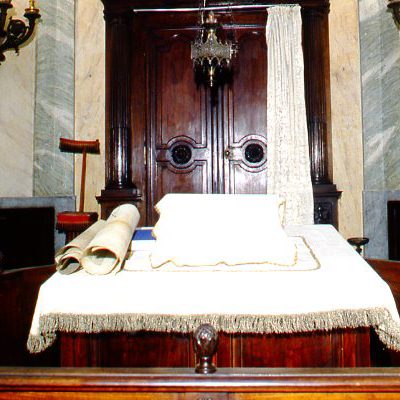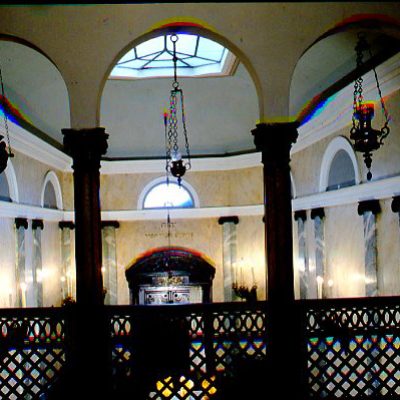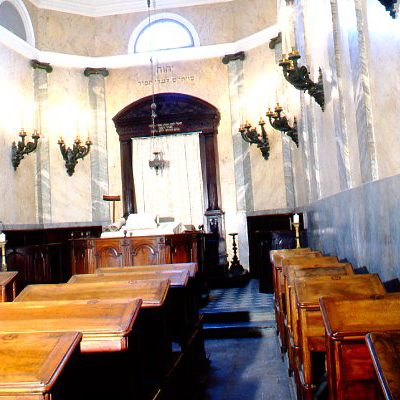The existing synagogue was built in 1866 within the community’s building, purchased in 1822 and left bare of any exterior identifying features. The hall, on the uppermost floor, has an oblong shape, interspersed with pilasters clad in marbled stucco. It features the typical layout of the period, inspired by Catholic churches: opposite the entrance sits the 18th century aron, originally from the synagogue of Colorno; in front of it is the tevah, made at the same time as the synagogue was designed, as were all the other furnishings. The central space is entirely occupied by benches for the public, arranged in parallel rows. Above the entrance, the hall is enclosed by the women’s gallery. A plaque on the parapet commemorates the synagogue’s inauguration.
Vicolo Cervi, 4
Visits by appointment
Tel. +39 0521 200243
Email: com.ebraica.pr@gmail.com
http://www.museoebraicosoragna.net/la-comunita-ebraica-di-parma.html




